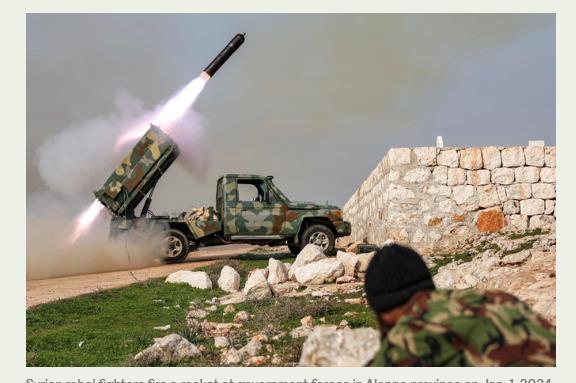
December is traditionally a quiet month in international politics, yet much is changing in Europe at the moment, as will be showcased at the EU summit of 27 presidents and prime ministers that begins in Brussels on Dec. 15.
Exhibit one is the new German government, which took office on Wednesday. This follows the voting in of left-of-center Social Democrat leader Olaf Scholz as Angela Merkel’s successor as chancellor. He leads a three-way coalition with the Greens and the pro-business Free Democratic Party that could bring much change to Germany.
Exhibit two is the new Quirinal Treaty signed last month by Italian Prime Minister Mario Draghi and French President Emmanuel Macron to bolster bilateral cooperation in Europe. The agreement has drawn comparison with the Elysee Treaty between France and Germany, which was created to rebuild their relationship after the Second World War, and could see significantly stronger international cooperation between Paris and Rome in the coming years.
However, while these twin changes are perceived broadly positively in Brussels, there are countervailing forces, mainly in Eastern Europe, that complicate the picture. Exhibit three is the Hungarian government, the only EU administration not to be invited to US President Joe Biden’s summit of democracies this week, with Budapest blocking Brussels from taking a common position toward the big conference.
Hungary is not alone in Eastern Europe with its antagonism to the EU. Only a few weeks ago, Poland’s Constitutional Tribunal ruled that key articles of one of the EU’s primary treaties were incompatible with Polish law; in effect rejecting the principle that EU law has primacy over national legislation in certain judicial areas.
The challenge made by Polish Prime Minister Mateusz Morawiecki to one of the EU’s core legal principles has escalated his government’s dispute with Brussels, fueling concerns that Warsaw is heading toward the door, or “Polexit.” Key states, including France, say such a departure is now a “de facto risk” and have rebuked Poland, saying EU membership relies on “complete and unconditional adherence to common values and rules,” and was “not simply a moral commitment but also a legal commitment.”
Amid this political tumult, the future of the EU is difficult to decipher given the multitude of views across the continent. The debate could remain blurry for months to come, potentially at least until May’s French election, which could offer continuity in the form of a second term for Macron or significant change in the form of a far-right leader, possibly Marine Le Pen, who was the runner-up last time around.
At least until this political mist clears in France, Scholz, Draghi, Morawiecki and Hungarian Prime Minister Viktor Orban will be key players seeking to shape the debate about the continent’s future. And next week’s summit offers a key opportunity to further their ambitions.
The future that, by and large, Macron, Scholz and Draghi, plus some others including Spanish Prime Minister Pedro Sanchez, broadly favor is the 27 member states deciding to do more together, reigniting European integration by deepening cooperation, with decisions agreed faster and enforced more quickly.
Building from the decision last year to give the bloc, for the first time in its history, debt-raising powers to finance a €750 billion ($850 billion) post-coronavirus recovery plan, announcements to watch for in 2022 might include a push for the creation of a deeper European Defense Union, which has assumed new importance for some in Europe since the announcement of the US-UK-Australia security pact.
Should there be persistent blockers to these agendas, however, it is plausible that France, Italy, Germany and others such as Spain — incidentally the four largest EU economies — may move toward more coalitions of the willing in select policy areas to push the integration agenda forward on a flexible, rather than across-the-board, basis. A model here is the eurozone, where about 19 of the current 27 EU members have entered into a monetary union, with the euro as the single currency.
Yet, even this kind of partial forward movement for the integrationists is far from certain and the full spectrum of scenarios in the period to come also includes the possibility of a post-Brexit EU retreat. This might even see, for instance, a return to little more than the current economic single market, which seeks to guarantee freedom of movement of goods, capital, services and people.
In this dynamic context of push and pull, perhaps the most plausible scenario is a broad-based continuation of the status quo. This would see the EU muddling through and seeking to deliver on the 2016 Bratislava Declaration, agreed just weeks after the UK’s Brexit referendum, of better tackling migration and border security, beefing up external security and defense, and enhancing economic and social development.
While the direction of the EU is uncertain, what is clear is that the recent changes across the continent have left the kaleidoscope in flux. Next year could have an outsized impact in defining the economic and political character of the bloc not just in the 2020s, but well beyond.
• Andrew Hammond is an Associate at LSE IDEAS at the London School of Economics.
Disclaimer: Views expressed by writers in this section are their own and do not necessarily reflect Arab News" point-of-view












